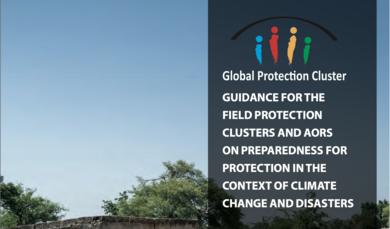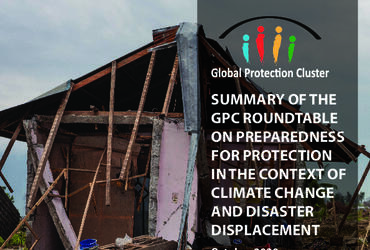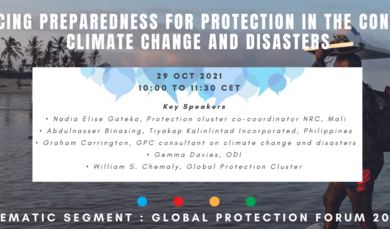Entire populations are already suffering the impacts of climate change, but vulnerable people living in some of the most fragile and conflict-affected countries are often disproportionately affected. Many internally displaced people (IDPs) are on the frontlines of the climate emergency. Some are living in climate “hotspots”, where they typically lack the resources to adapt to an increasingly hostile environment.
Scientists warn that displacement in the context of the adverse effects of climate change will increase as extreme weather events become more frequent and intense, sea levels rise, and many countries start to experience the limits of their adaptation and disaster risk reduction action and measures.
The impact of weather and climate-related hazards is most acutely felt by individuals and communities with pre-existing vulnerabilities, often characterized by the limited enjoyment of rights. Many of the most important protection challenges in disaster situations are long-standing protection and human rights concerns which are brought to light and further exacerbated by the emergency. Disaster situations cause and worsen protection risks such as sexual and gender-based violence; family separation; human trafficking; unequal access to assistance; discrimination in aid provision; enforced relocation; loss of personal documentation; land disputes and issues related to land and property rights.
The Approach
The Global Protection Cluster and field Protection Clusters play a leading role in protecting and supporting people who are forcibly displaced inside their countries and cannot safely return home. Many people already displaced for reasons other than disasters linked to hazards reside in climate change hotspots where they may be exposed to secondary displacement and reduced chances of being able to return home. When called upon to intervene, Protection Clusters can support registration, documentation, family reunification and the provision of other protective services.
Through its participation in global policy processes, the Global Protection Cluster is enhancing its role in raising awareness about climate change as a driver of displacement and the need to address protection of people displaced in the context of disasters.
Climate action is at its core built on inclusive approaches and accountability to affected people. It should aim to amplify local/ marginalized voices in confronting related challenges and should strive to ensure equitable access to assistance and protection, and decision-making for all the people UNHCR serves.











